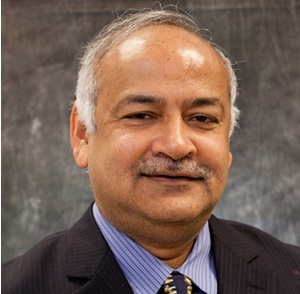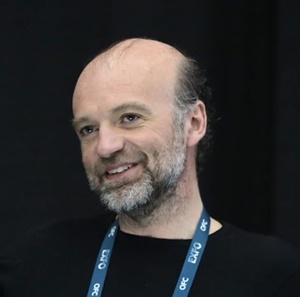TUTORIALS

Disaster Resilience of Telecom and IT Infrastructures
Biswanath Mukherjee, Distinguished Professor Emeritus, University of California, Davis, USA
To combat the rising risk of disasters (e.g., hurricanes, earthquakes, tornados, flooding, etc.) and attacks against our national / global interests and economic wellbeing, novel methods are needed to protect our telecommunication and Information Technology (IT) infrastructures consisting of optical-fiber backbone networks and distributed datacenters powering our Internet backbone. Note that such disasters could lead to a domino effect of catastrophic failures beyond telecom and IT facilities; and into power, transportation, financial, and other critical infrastructures. Topics such as the following will be discussed in this tutorial: normal preparedness (risk-aware provisioning); enhanced preparedness (dynamic re-provisioning); degraded service under resource crunch; content connectivity (vs. network connectivity) due to the increasing deployment of cloud services; exploiting multi-path routing, anycasting, and data duplication; correlated cascading failures in interdependent networks; resilient control-plane design; rapid data evacuation; rapid deployment of terrestrial and aerial resources to restore connectivity in disaster-affected areas; and related topics.
Important Dates
Submission deadline (firm): 20 Dec. 2022; 20 Jan. 2023; 27 January 2023
Acceptance notification: 10 March 2023
Camera-ready submission: 20 March 2023
Conference date: 08-11 May 2023
Latest News
Platinum sponsor
ONDM 2023 was sponsored by Huawei Technologies France SASU
Platinum sponsor
Gold sponsor
Silver sponsor
Organization
Technical co-sponsorship
Supported by
Digital-twin of physical-layer as enabler for open and disaggregated optical networks
Vittorio Curri, Full Professor, Department of Electronics and Telecommunications, Politecnico di Torino, Italy
Physical layer in optical networks is a set of transparent optical circuits – lightpaths – that has been extensively shown as reliably approximated by additive white and Gaussian noise channels affected by the ASE noise from amplifiers and the nonlinear interference (NLI) from the Kerr effect. While coherent transceiver can be effectively modeled by the back-to-back characterization. We will first address the physics behind such approximation including also the statistical impairments due the PMD, PDL and filtering penalties, and other uncertainties. Then, we will show how the digital twin that integrate transmission impairment models of all network elements can be exploited to reliably evaluate QoT, latency and energy consumption on the topology. Finally, we will address the use of the digital twin as vendor neutral planning tool for disaggregated infrastructure and as on-line service in the multi-layer hierarchical controller fully abstracting the physical layer for the optical device controller separated from the optical circuit development, so enabling multivendor networks with independent optical data transport and infrastructure control. We will also comments on th synergistic use of AI&ML techniques assisting the digital twin.


Secure Optical Communications
Helmut Griesser, Director of Advanced Technology, ADVA Network Security, Germany
Optical networks are part of our critical infrastructure, nevertheless they are not immune to cyberattacks like eavesdropping. This tutorial will explain the current state of the art in securing optical networks, starting with an introduction of the most important cryptographic primitives (building blocks) and how these can be used to secure digital communication. We will address the threat from quantum computing for current cryptographic protocols and show the status of post-quantum cryptography. The tutorial also compares algorithmic cryptography with some popular concepts of physical-layer security.





